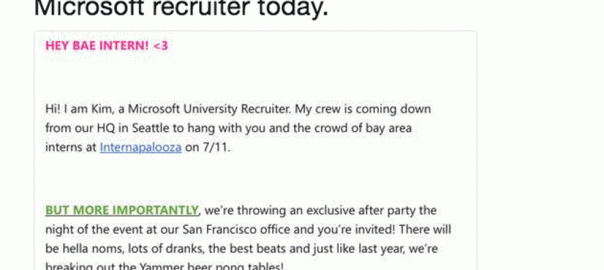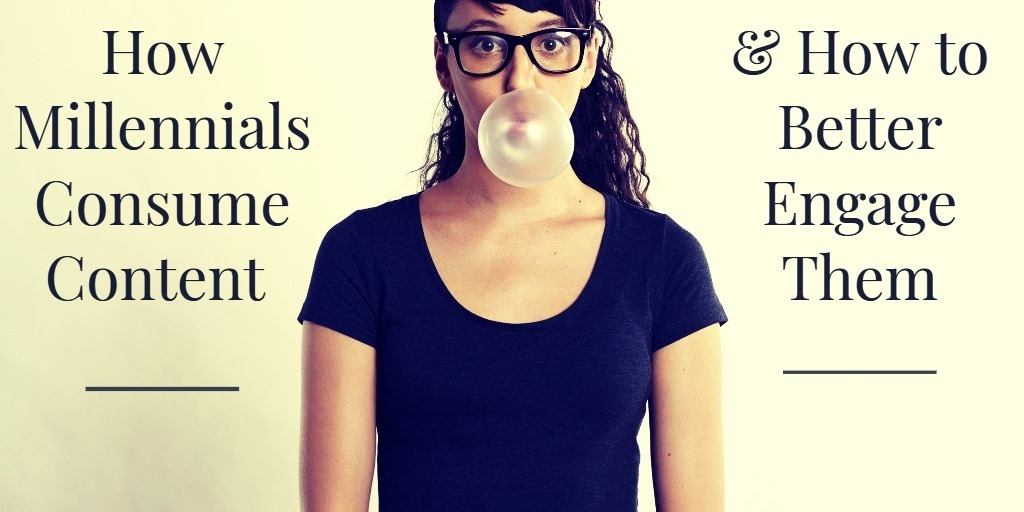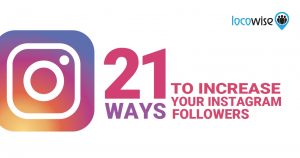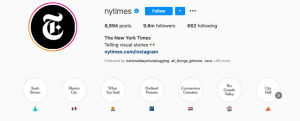With an annual spending power projected to hit $1.4 trillion by 2020, it’s no wonder millennials are a hot topic for marketers all over.
More than ever, businesses must tailor their content strategies to appeal to millennials—but how do you effectively market to and engage this group?
Typecast as lazy and entitled social media addicts with short attention spans, there’s no shortage of millennial myths and stereotypes. But in order to better market to them, we need to get the facts straight.
What Does The Data Say?
To begin with, there’s debate about what even constitutes a millennial. Broadly speaking, the term refers to “individuals who reached adulthood around the turn of the 21st century,” with birth year ranging from as early as 1976 to as late as 2004. Although this range varies between media outlets and researchers, they make up roughly a quarter of the American population.
As to be expected, millennials don’t follow the same consumption patterns as their predecessors, Generation X and baby boomers. Thanks to the computer science boom of the ’90s, their identity is largely shaped by growing up in an interconnected world of smartphones and social media.
Here’s what sets them apart.
Consumer Input Makes A Difference
Compared to their elders, more millennials trust recommendations from strangers, specifically in the form of user-generated content (UGC), or content created by their peers. (This includes comments, reviews, pictures, and videos.) In fact, 93% read reviews before making a purchase.
Perhaps it’s no surprise, given the popularity of aggregate review sites like Yelp and Rotten Tomatoes. Brands no longer have the last word, as millennials overwhelmingly turn to their peers, both anonymous and familiar, for input.
Millennials Still Read—just Differently
According to the Pew Research Center, millennials prefer to read, not watch their news—more so than their elders, actually. But unlike older generations, the majority (81%) prefer reading digital text to print.
This distinction underscores why online mediums are necessary for any marketing strategy, but content writers should take heed: copywriting for the web is not the same as print copywriting. For instance, online readers tend to scan content rather than reading it word for word.
Basic Needs Take Precedence
News and media often attribute the retail apocalypse to millennials, claiming they spend more on experiences than material things, e.g., a vacation or concert tickets instead of a new vehicle or clothes.
However, according to a study by Deloitte, millennials spend relatively the same amount as older generations on experiences. In fact, for dining out and entertainment expenses, millennials spend roughly 2% less than the 18-34-year-olds from three decades ago.
So what are millennials spending more on? It turns out these consumers spend more on healthcare, housing, and pensions and Social Security—not the supposed experiences news outlets claim.
Social Responsibility Matters
The results of Deloitte’s 2017 Millennial Survey reveal that this demographic overwhelmingly views business as “a force for positive change.” This sentiment is reflected in the expectation that companies aim for more than just profit, with millennials more apt to support brands that rally behind a cause.
The growth of organic food sales is just one example of this, as millennials express more enthusiasm for environmentalism than older generations. Sustainability isn’t the only key to a millennial’s wallet, though; they also care about civil rights, healthcare, and unemployment.
How You Can Better Market To Millennials
It’s true—millennials are among today’s least engaged customers, and less than 7% identify as brand loyalists. However, this doesn’t mean they’re a lost cause for marketing. Rather, they simply require a different marketing approach.
Here’s how the above data translates into takeaways for increasing their engagement.
Make Your Content Mobile-friendly
It’s no surprise that 94% of millennials in the U.S. own a smartphone compared to 46% of those aged 65 and older. Moreover, smartphone dependence—the reliance on smartphones in place of broadband Internet connection at home—is significantly higher among younger Americans than older ones.
As a result, millennials are more comfortable using their phones for regular content browsing needs, making it imperative for your web content to be mobile-friendly.
Though rates of mobile purchase are still dwarfed by online and offline transactions, mobile content has morphed to become a shopping companion, helping customers score coupons, compare prices, and check product availability.
Develop User Personas
Given that American millennials are the most diverse adult generation in U.S. history, it’s erroneous to market to them as one homogenous group. And yet so many companies have done so, often resulting in tone-deaf campaigns. Take a look at Chevy’s commercial for the 2016 Cruze, a poor attempt at introspection that raked in heavy criticism instead of approval.
To avoid stereotyping your millennial customers, incorporate user personas into your marketing strategy. Personas help to drive content creation and ensure your messaging aligns with customer tastes.
For an idea of how to distinguish between millennial subgroups, take a look at the advertising firm Exponential Interactive’s 12 broad personas.
Take Advantage Of Customer Reviews
Since consumer input is more likely to influence millennials’ buying decisions, it makes sense to incorporate user reviews into your marketing strategy. Yet the benefits of customer reviews are not limited to driving millennial purchasing decisions; they also include:
- Bolstering online visibility
- Providing a gauge for customer satisfaction
- Opening customer engagement
Consider how activity on Yelp or Google Reviews helps to boost businesses’ SEO and web presences. Participating on these channels also serves to inform business owners whether their products are a hit or miss, with one-star reviews providing red flags for issues that might have gone unnoticed otherwise. Lastly, reviews provide an opportunity for businesses to directly respond to customers—bringing the engagement millennials like.
Make Your Content Skimmable
Since more millennials prefer to read online, web content should be to the point and skimmable. This means using subheadings, bullet points, and shorter paragraphs. While narrative prose tends to be flowery, effective copywriting for the Internet is succinct.
In addition, eye-tracking research has shown that 2-3 letter words are skipped nearly 75% of the time. Since 8-letter words grab more attention, marketers should use longer words to begin paragraphs.
Again, millennials still read, albeit differently. The popularity of services like theSkimm, the audience of which consists primarily of female millennials, demonstrates the importance of producing quick, easily digestible pieces of content.
Use Authentic Messaging
The days of traditional push advertising are waning with the rise of millennials. Overt messaging and ads that try too hard to appeal to this demographic come across as excessive and over-the-top. You can see this with Chevy’s all-emoji press release and Microsoft’s slang-filled recruitment email—two examples that missed their target, and crashed and burned instead.
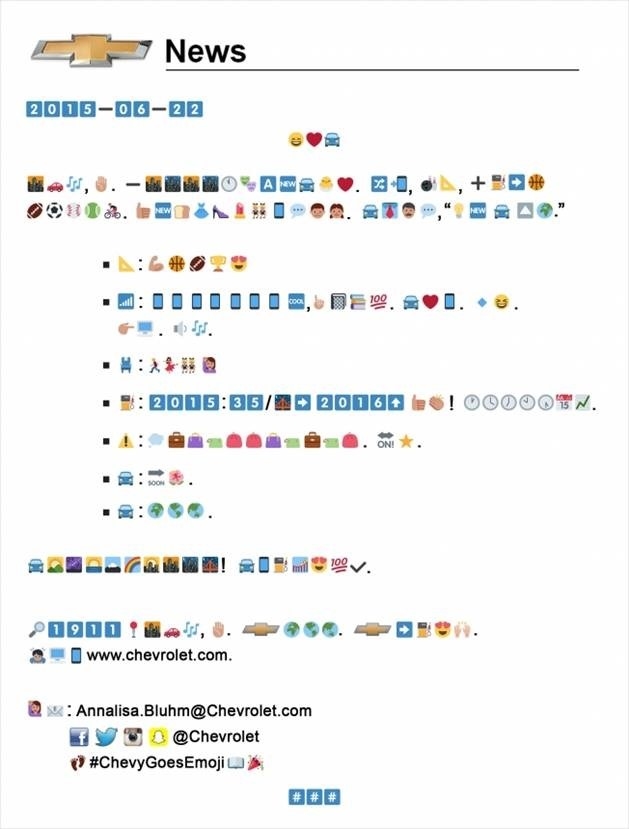
Image Credit: Chevrolet
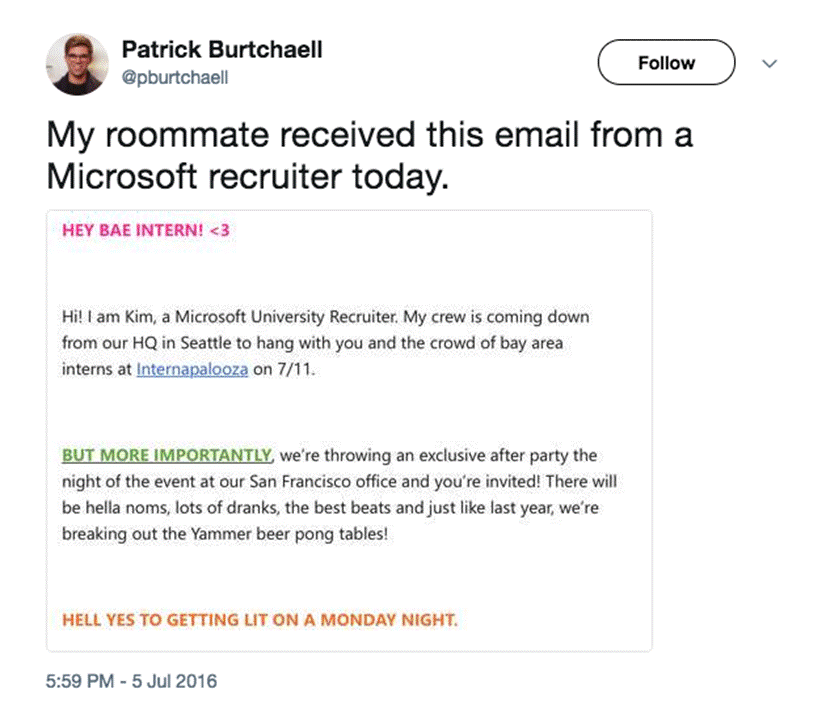
Marketing strategies should focus on brand authenticity—that means cultivating a clear and accurate message for your product and/or service. Though humor grabs attention, it shouldn’t be forced; attempts to be clever or edgy can easily backfire. Businesses should also avoid bribing millennial customers, e.g., offering generous discounts in exchange for social media shout-outs.
Build Customer Relationships Through Blogging And Social Media
When executed well, blogging can establish a business’s online presence and authority about a subject. Moreover, it can enhance customer relationships by speaking directly to them, showing a company’s values and personality.
The same goes for social media. Millennial consumers respond positively to companies with a strong presence on channels like Facebook, Twitter, and Instagram. Thanks to these social networks, the distance between businesses and customers is narrower than ever. Social media bridges the gap by encouraging not only brand and consumer interaction, but also consumer interaction with politicians and celebrities.
For an example of an effective corporate blog, check out the sporting goods and outdoor equipment company, REI. REI’s blog offers gear tips, profiles of both professional and everyday customers, and broader sustainability discussions that speak to the company’s environmentalist values.
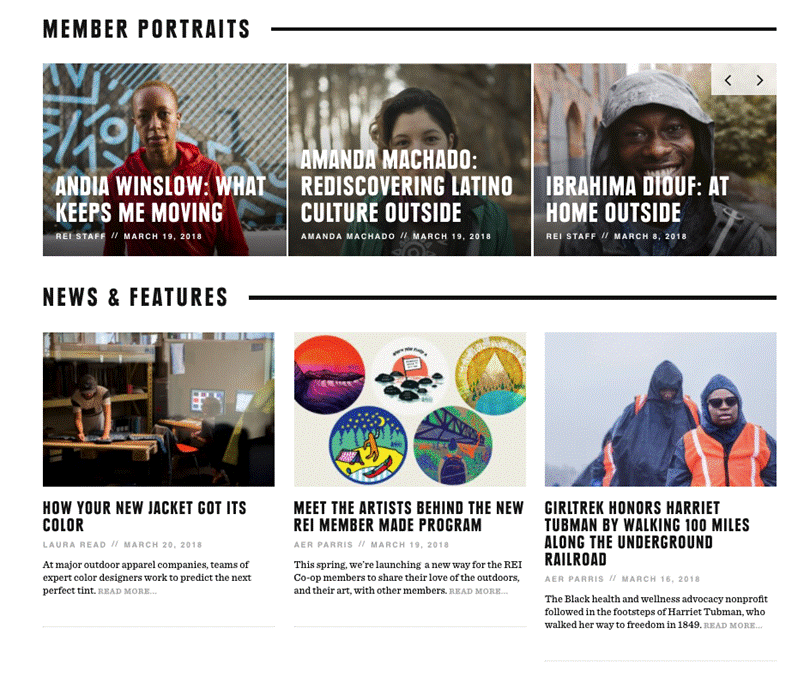
Image Credit: REI Co-Op Journal
Conclusion
Consumer trends reveal much about how to better appeal to specific audiences, and millennials are no exception. To foster engagement and enrich customer relationships with them, companies and brands need to understand millennials as more than their stereotypes and caricatures.
Were any of these millennial consumer trends a surprise? Let us know with a comment below.
The post How Millennials Consume Content (& How to Better Engage Them) appeared first on Search Engine People Blog.
(90)
